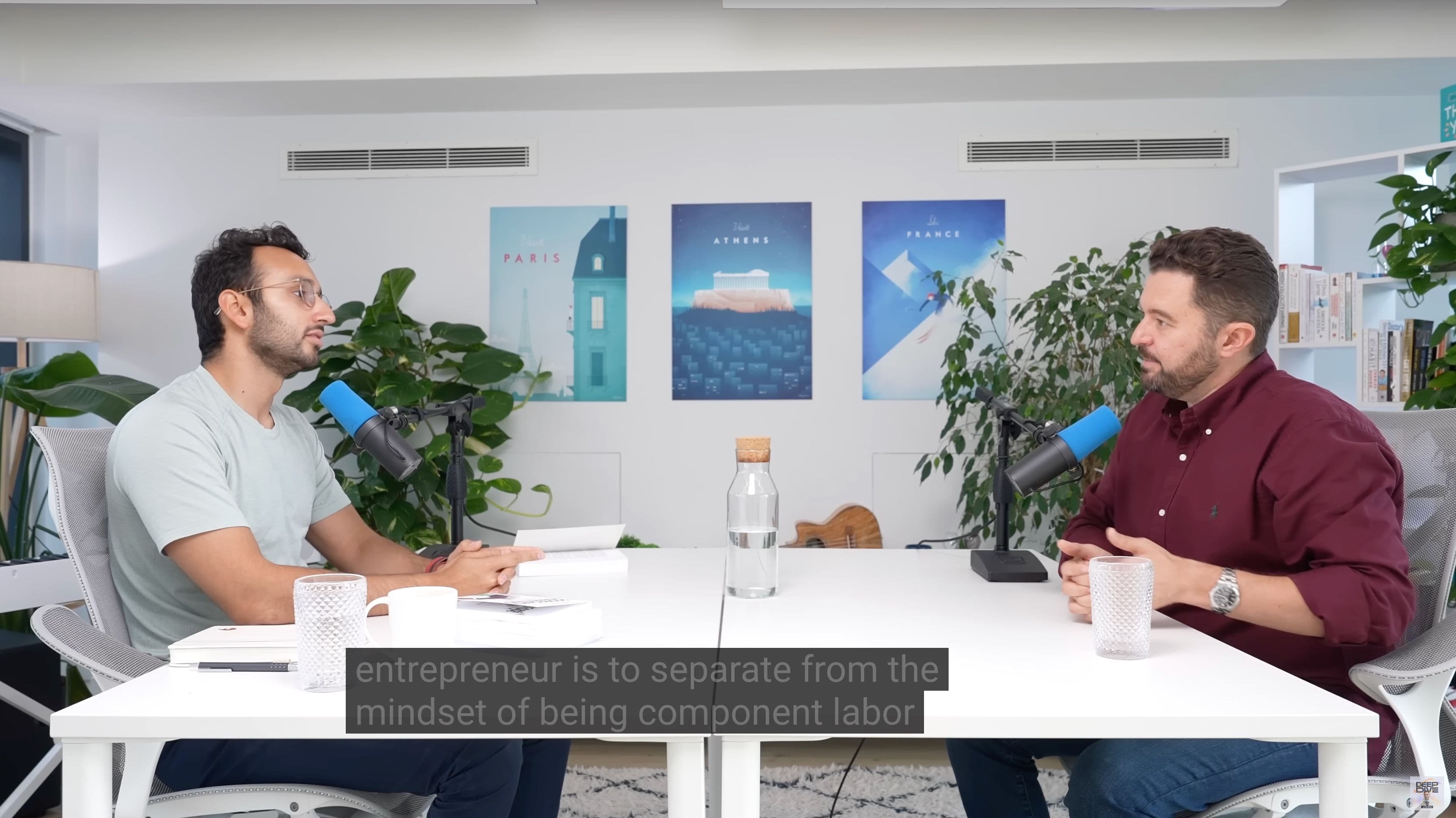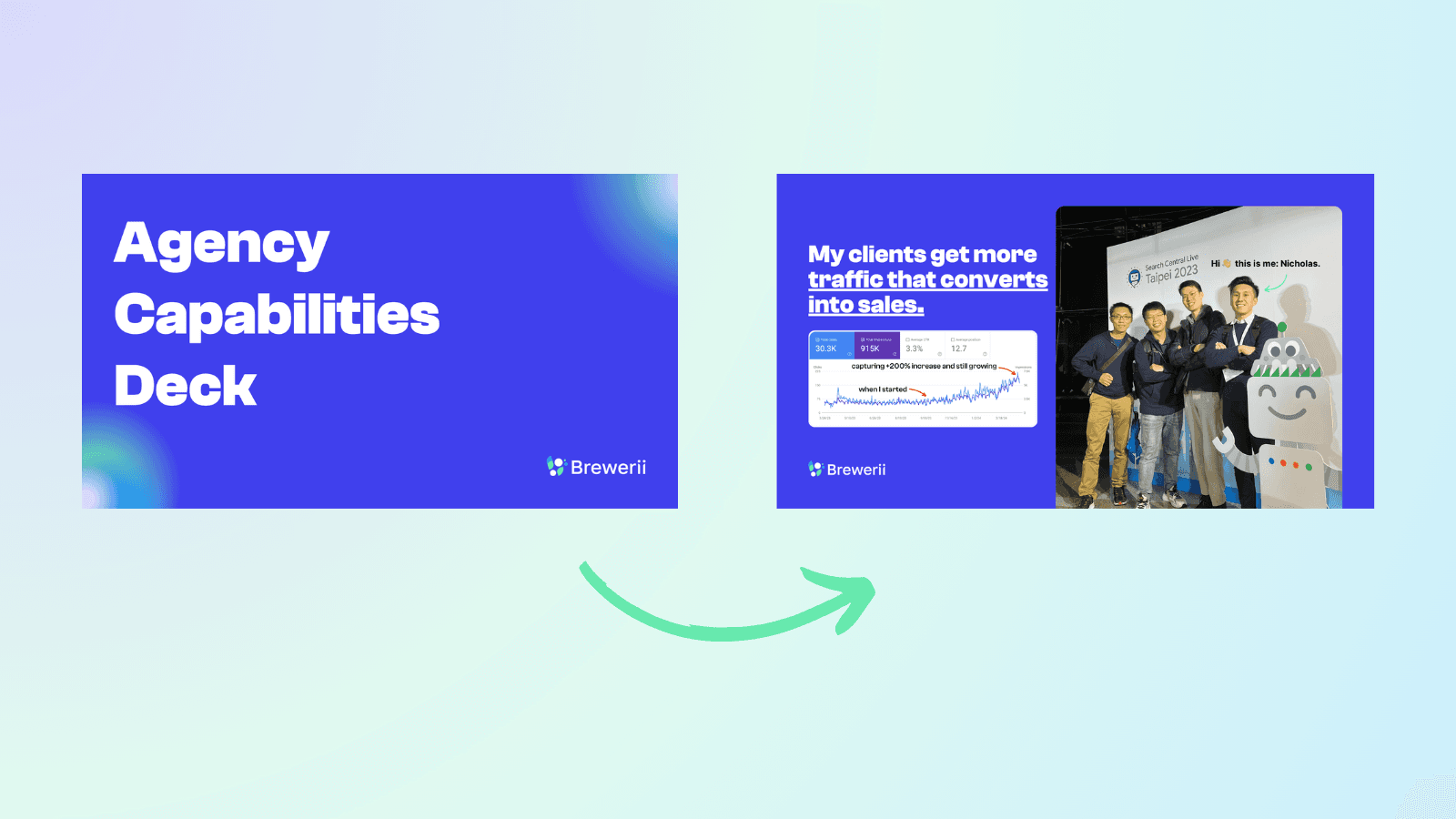Hello, I’m Nicholas. I've recently left my corporate job to fully commit to my own business.
Unlike typical YouTube videos where the person quits without a backup plan, my exit was strategic. Over the past 10 months, I've successfully expanded my side hustle into a business that now sustains my full-time income.
Today, I'm excited to share with you the five key insights from my journey.
I understand that what worked for me may not work for everyone, but I felt compelled to share these insights as they are lessons I wish I had known before starting any business.
With that in mind, let's dive into the five crucial lessons I've learned.
A brief background of myself and the business
It’s not the first time I’ve tried to scale a side hustle into a business that covers my full-time income. I've experienced several failures along the way.
I've attempted various ventures, including a YouTube channel, an esports media site, multiple dropshipping stores, and an NFT marketplace, among others.
However, none were successful enough to replace my full-time income.
Finally, after multiple attempts, I have successfully scaled my SEO freelancing business into an agency, now earning more than I did in my previous full-time job.
A side note here: I used to work as a software engineer in Hong Kong. My pay was comparable to a six-figure income in NYC. (Considering the low income taxes in Hong Kong, my take-home pay was quite substantial).
So, what have I learned during these 10 months scaling my business?
Lesson (1) - You don’t have to do it ALL on your own

An idea I learned from Daniel Priestley, a successful entrepreneur who has built multi-million dollar businesses, changed my mindset about having to handle every aspect of business on my own.
The idea was to shift from a technician mindset to an entrepreneur mindset.
How Anyone Can Develop The Mindset Of A Multi-Million Dollar Entrepreneur - Daniel Priestley
In this episode of Ali Abdaal’s Dive Deep podcast, Daniel Priestley discusses the roles of freelancers, technicians, and entrepreneurs.
“When we freelance we're essentially selling ourselves as component labor to someone else who has a bigger outcome in mind but we're just doing that ad hoc. Now the trick about being an entrepreneur is to separate from the mindset of being component labor and to actually move across to being outcome focused and looking at what the customer is trying to get done.”
Obviously, I was trapped in the technician mindset which led me willingly engulfed in the hands-on work I needed to deliver to clients.
This left me no room for the crucial aspects of being a business owner/entrepreneur, such as securing deals and generating revenue to fuel the business.
Realizing that recruiting a co-founder was the solution to this obstacle, I was fortunate to find one. Together, we've been able to peacefully share the workload, allowing us to scale the business sufficiently for both of us to leave our full-time jobs and commit fully.
Lesson learned: Focus on identifying the problem, not solving it. Hire someone to implement the solution.
Lesson (2) - A little bit of “founder-led sales” can help you stand out of the crowd
I love optimizing my sales materials because I aim for them to address most of the questions prospects have in mind, while also showcasing our agency’s capability in delivering outstanding SEO results.
However, no matter how detailed the information was, I still struggled to receive callbacks after sending the decks to the prospects.
Unsure of where to turn, I decided to seek the answer through reading.
I discovered a book titled “Founding Sales: The Early Stage Go-to-Market Handbook”.
Although my offer wasn't a Software-as-a-Service (SaaS), I found common ground because the author, Peter Kazanjy, had transitioned to a sales role when he founded TalentBin, which he sold to Monster in 2014.
The key insight I gained from this book was a concept called “Found-led sales”, which meant the founders actively participate in the sales process, using their deep product knowledge, passion, and dedication to persuade potential customers.
To implement this concept, I began to participate in SEO conferences and networking events to directly engage with prospects.
Did I secure any deals? Yes. Were these clients the same ones I had met at networking events? No.
The real change came when I started including photos from the conferences in the sales decks. My callback and closing rates both doubled.
I was surprised and curious, and wanted to understand why. I include a question in the client onboarding form asking them why they chose us. From a few answers, I learned that my capability deck stood out because it included photos of me participating in industry events.

It was the most unexpected effect I had ever considered when optimizing my sales materials.
Lesson learned: People do business with human beings. Get out there, engage with new people, document your activities, and share them with potential prospects.
Lesson (3) - Create a snowball effect as soon as possible
Creating a snowball effect involves building something that sells itself. In my case, that was the SEO case study/result that I produced for my previous clients.
A case study isn't the only form the initial snowball can take. Anything that offers perceived value to your prospects qualifies. This essentially communicates that your services or products could solve their problems.
For example, a testimonial or a free trial can also provide this type of value.
Back to my story, I discovered the idea of building a snowball effect when I was talking to a prospect (now a client).
Returning to my story, I discovered the concept of creating a snowball effect during a conversation with a prospect, who is now a client.
Her name is Emily, and to this day, I vividly remember her unexpected response right after I presented her with an SEO case study.
“How could you achieve such a result?. It’s impressive.”
I concealed my emotions at that moment and humbly explained to her the processes and methodologies that led to these results.
We ended up with a follow-up meeting and I secured the deal.
However, that wasn't the end of the story. I delivered another excellent SEO result for her company and turned part of the campaign into a separate case study. These case studies began to sell themselves.
Now, I understand the importance of creating that first snowball, even if it seems small at first. Eventually, it will grow and have an unimaginable impact on your business.
Lesson learned: It’s crucial to start your first snowball; begin by asking your customers or clients for testimonials and transform them into self-selling materials.
Lesson (4) - Don’t say yes to everything
What does saying ‘Yes’ mean? To me, it means committing to an action, whether by choice or obligation.
When I was working solo, I didn't limit myself to just selling SEO solutions.
My instinct was to say 'Yes' to any opportunities that came from prospects. I believed that taking more projects would generate more income, allowing me to scale my side-hustle into a full-time business.
I was clearly mistaken. Juggling too many projects - SEO, web development, email automation - alongside my full-time job, led to burnout.
I realized that continuously working on various projects wasn't a sustainable solution. Instead of customizing solutions for each new lead, I considered standardizing my service to serve more clients efficiently.
A side note here: read again lesson 3: if I continued diversifying projects, it would be hard to build the momentum at the early stage. For example, a case study on email automation might not appeal to a prospect seeking SEO services.
I decided to package all the essential elements of a successful SEO campaign into one offer. Since then, I’ve focused on this streamlined approach, and it saved me the time and energy on tasks that are less impactful to the business growth.
This decision made me acquire more clients and eventually grow the side hustle into a business that surpassed the income from my previous full-time job.
Generally, you should be more selective with your “Yeses” and conserve your time and energy for efforts that truly drive results for your business.
Lesson learned: When running a side hustle, your time is precious—focus only on what significantly impacts your growth.
Lesson (5) - Build your own system
The internet had abstracted many tedious operations away from running a business.
However, scaling your own business requires you to get your hands dirty on these things.
Running a store on Etsy abstracts away customer acquisition while dropshipping abstracts away the shipping and manufacturing costs of running an e-commerce store.
While these platforms or models help you get started as quickly as possible, it’s really hard to scale when relying on them. Scaling requires increased revenue, and staying on these platforms can constrain your revenue and increase operating expenses.
For example, scaling an Etsy store might lead to higher operational costs due to transaction fees and Etsy ads.
Here, I’m not against using these tools for your side hustle. What I want to convey is that when you begin to scale your business, you must calculate all the numbers, including costs, revenue, margin, and ROI. If possible, minimize the use of tools/platforms that impact these figures.
For me, optimizing my operational costs involved building my own hiring system.
I used to rely on freelancer marketplaces to hire people. However, things didn't go as expected. I discovered that using such external platforms cost me more money and also required more time to vet freelancers/contractors.
I decided to find freelancers elsewhere and designed an application form to learn about their talents and ways of working. I wanted to see how these attributes matched our team's internal practices.
In the long run, I optimized talent acquisition cost, and the people we now hire are much more compatible with our team.
Lesson learned: A platform is the ceiling of your growth; learn to optimize costs and revenue by building your own system.
What’s next?
Thanks for reading the article until here. I hope you have learned something from my experience.
However, learning is not always enough, it requires taking actions to make things happen. Try to digest all the learnings and make it into an actionable item that you can start on tomorrow.
I hope to hear the news that you've successfully scaled your side hustle too.